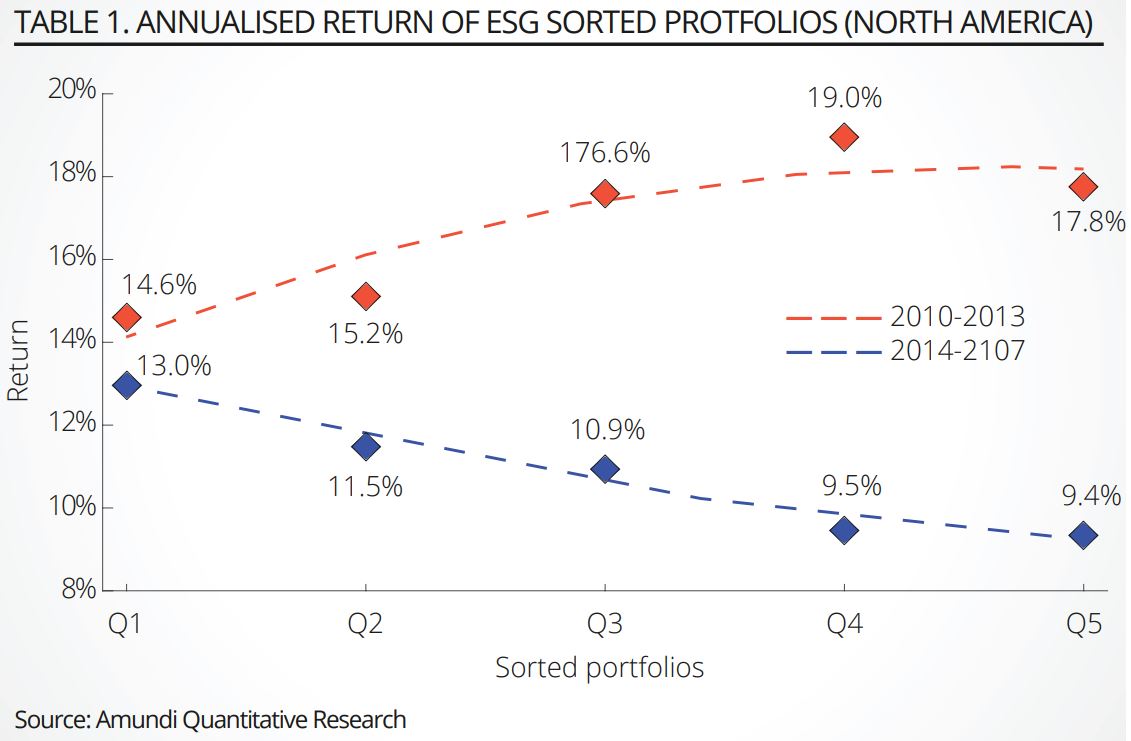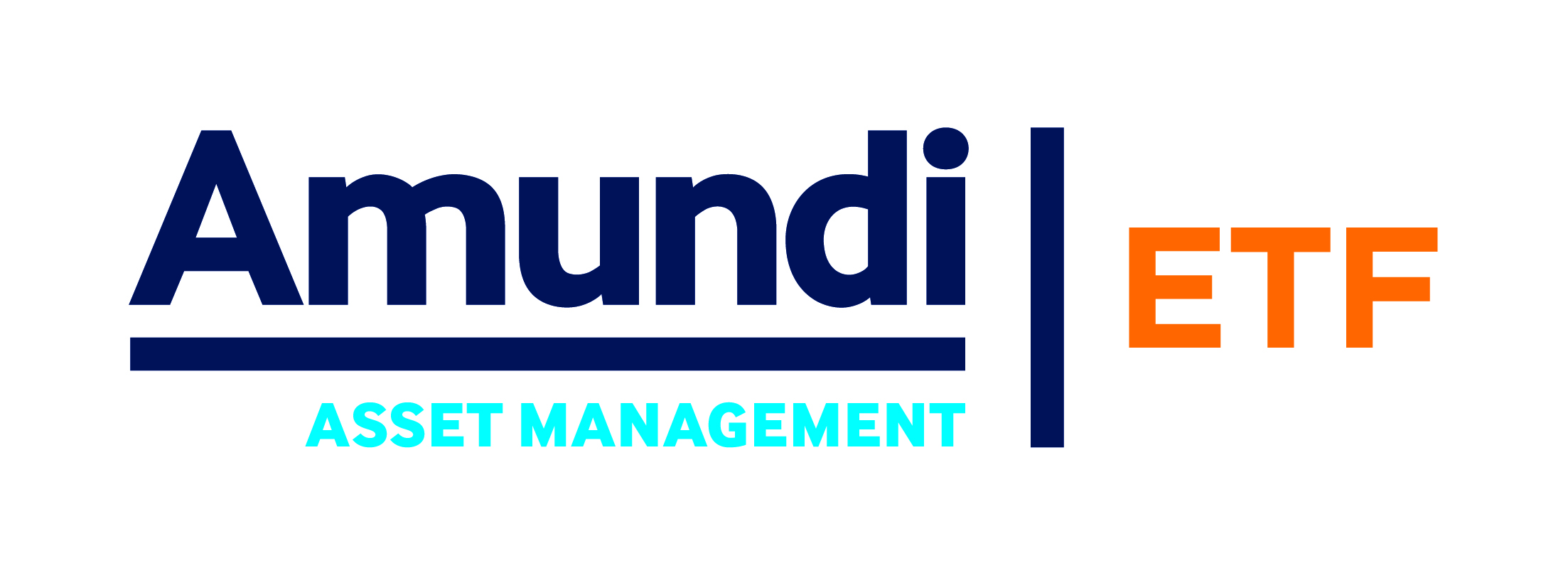Can we consider that ESG has become a new risk factor, exactly like the traditional factors of factor investing, such as size, value, momentum, quality, or low volatility/low beta? This is an important question, and the answer really is not easy.
A number of published Amundi research1 papers show that the relationship between ESG and performance is not static, but dynamic sometimes ESG may create performance, and sometimes destroy it. This research has shown that ESG investing tended to penalise both active and passive investors between 2010 and 2013, but drove outperformance and positive alpha between 2014 and 2017 in Europe and North America.
The reason for this change was the extrinsic value of ESG investing, i.e. investment flows and the mobilisation of investors, especially in Europe, which created a positive bubble for ESG assets.
The 2018-19 period, meanwhile, continues this trend, with ESG delivering positive alpha, but with the eurozone increasingly outpacing North America, and the social pillar emerging to overshadow environmental and governance as the main performance driver in the 2018-2019 period. re, ESG investing has grown more complex, with stock pickers going beyond simple exclusion or inclusion strategies to capitalise on the dynamics of ESG scores.
Can we assume that ESG is a new risk factor? It is important to recognise first that risk factors in investing are different matters from risk factors in business risk management, such as carbon risk, which must be actively managed. Factor investing focuses on the difference between performance from systematic factors and specific factors, or between alpha and beta. Several betas – market risk, size, value, momentum, low volatility, quality, etc. – are usually at play.
Based on single-factor regression of the MSCI World index, we find that specific factor risk has increased in 2014-19, and that ESG has beaten every other single factor except the market factor in that period, in both North America and the eurozone – although its influence is less marked in a multi-factor framework. In North America, ESG is valuable for poorly diversified portfolios, but less so for highly diversified ones, but in the eurozone, it retains its importance.

In summary, “ESG remains an alpha strategy in North America,” and becomes a beta (or risk factor) strategy in the eurozone – due basically to ESG’s underlying market share in each region. North America ESG, we believe, will eventually follow suit as market share increases.
ESG and ETFs: The superior approach to sustainable investing?
Carbon risk is another ESG related area that has been a focus recently and some have questioned its role as a factor. A further Amundi research paper, Measuring and Managing Carbon Risk in Investment Portfolios, advises caution in treating the carbon risk factor in the same way as the ESG factor for the diversification of a portfolio from a factor investing perspective.

In fact, carbon risk, included in the environmental pillar of ESG, represents a narrow investment type and cannot be regarded as a key investing theme for institutional investors.
Therefore, this newly introduced market-based carbon risk measure, the carbon beta, is especially useful from a risk management perspective. It provides an applicable measure of carbon risk that can be used in traditional portfolio construction methods, such as minimum variance strategies or enhanced index portfolios through a risk overlay or a bottom-up approach to control the carbon risk.
1. How ESG investing has impacted the asset pricing in the equity market, 2018 and ESG investing in recent years: new insights from old challenges, 2019.
Thierry Roncalli is head of quantitative research at Amundi
This article first appeared in the Q4 2020 edition of Beyond Beta, the world’s only smart beta publication. To receive a full copy,click here.



